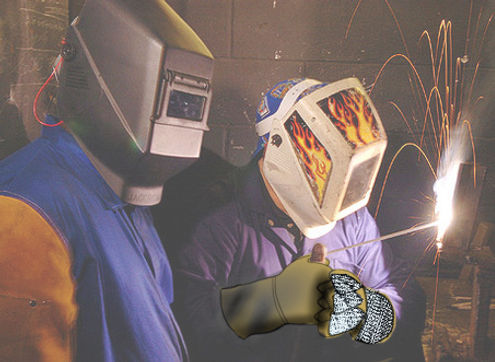
Welders are exposed to extreme heat situations in whitch the fingers and hands are the most exposed to dripping liquid metal and high temprature sparks. Tempratures can reach upwards of 500 degrees in a matter of seconds with most glove designs leaving welders with a thin layer of leather to protect them.
Welding is one of the most important jobs on the Jobsite it is also one of the fastest shrinking jobs in the world. 6 out of 10 welders will be retiring in the next 20 years. This means the welding trade is shrinking and they will either be paid more or the work being done will become spotty because they won't pay trained welders for the premium. This means that the less time they spend on a job site the better.
In my research, I Found that a welder can weld for about 4-5 min before He/She has to let their gloves cool off. This break can last anywhere between 2-3 min. The Focus that I held found direction to get welders to weld for longer and have less down time between welds.



The armadillo type protection on the back of the hand provided the used with an almost full range of motion and allowed the welder we used in testing to weld for 3 min longer than with the standard unshielded glove.
In focus group testing welders were excited and wanted to know where they could buy them and who was making them. The final product was presented to the president and head of design for Big Time Products. They sent it to their engineers for consideration for production.


Research & Development
WELDING
PRO
GLOVES
SERIES
Big Time Products approached Auburn University in the Fall of 2014 looking to expand their current line of construction site gloves. Specifically they wanted Auburn to look into their line of gorilla grip products to see if their was ample opportunity for expansion in to other markets using the same technology. This was a full semester long studio and our studio was able to do extensive research on glove design and innovation.

RONN
DESIGN
ALEX
Early ideation and testing began with a photo study of the many hand positions a worker or a law enforcement agency commonly use. The team then began a weeklong study of common wear points on the gloves, studying wear patterns and previously used gloves.
Phase I Ideation & In-Field Development
Final Product





Casting our own hands to test and study what hand positions are available with gloves on



Casting our own hands to test and study what hand positions are available with gloves on



